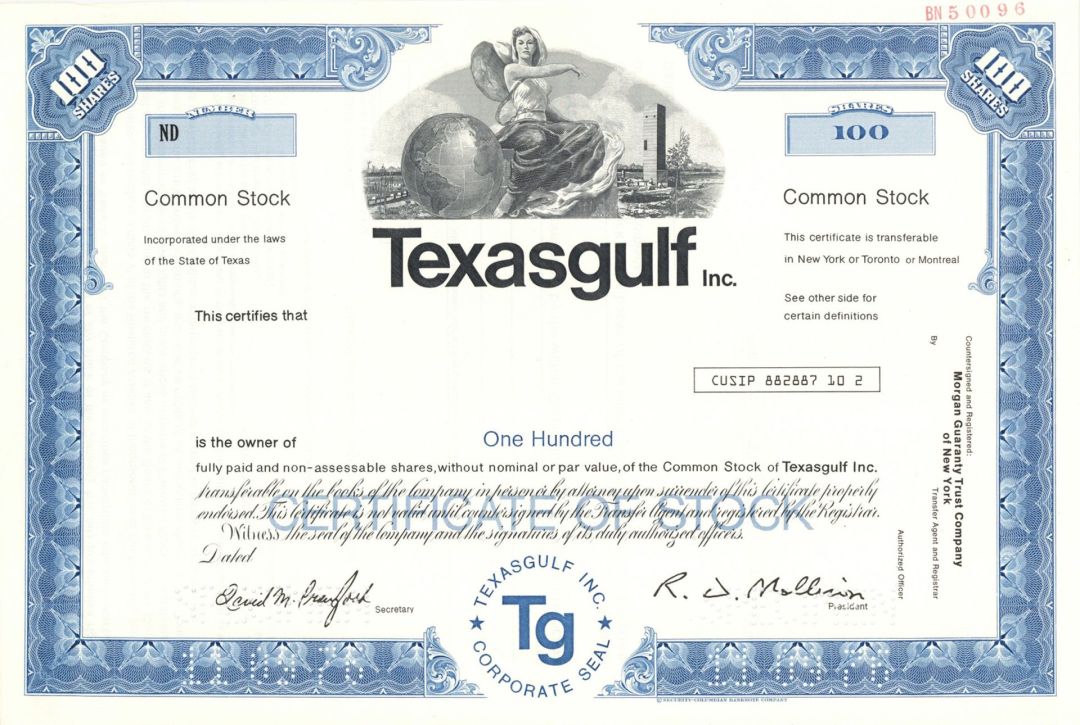Texasgulf Inc. - Specimen Stock Certificate
Inv# SE3681 Specimen StockTexas
Specimen Stock printed by Security-Columbian Banknote Company. Please specify color.
TEXASGULF.Texasgulf, Incorporated, began as the Gulf Sulphur Company in 1909 in Matagorda County, with its initial mine at the Big Hill Dome near Matagorda, Texas. This was followed by the massive Boling Dome mine in neighboring Wharton County. This dome is still considered one of the largest inland sulfur deposits in the world. By 1993, when mining operations there ceased, its total production had surpassed all other dome mines. With the Spindletop oilfield discovery in 1901, Texas drillers exploring along the Gulf Coast punctured numerous salt domes. At Big Hill, five miles from Matagorda, they found little oil, but a definite presence of sulfur. In 1908 two St. Louis businessmen, A. C. Einstein and J. W. Harrison, bought the mineral rights at Big Hill, drilled for sulfur, and found a good show. On December 23, 1909, they formed the Gulf Sulphur Company, with headquarters in Matagorda. The sulfur industry was in its infancy. In October 1891 Dr. Herman Frasch obtained a patent to use superheated water to melt sulfur crystals and pump the liquid to the surface and into vats, where it solidified into elemental sulfur. His method succeeded at a salt dome in Calcasieu Parish, Louisiana; however, fuel costs, primarily coal, hindered production until the oil discoveries. The Frasch process enabled large sulfur reserves to be mined, reduced domestic prices by 40 percent, and greatly reduced imports from abroad (mainly from Italy). In 1908 Frasch's basic patent expired, and Texas investors adapted his method to sulfur mining along the coast. On November 12, 1912, the first mine using the Frasch process was opened at Bryanmound, near Freeport. Read more at https://www.tshaonline.org/handbook/entries/texasgulf
Stock and Bond Specimens are made and usually retained by a printer as a record of the contract with a client, generally with manuscript contract notes such as the quantity printed. Specimens are sometimes produced for use by the printing company's sales team as examples of the firms products. These are usually marked "Specimen" and have no serial numbers.











Ebay ID: labarre_galleries